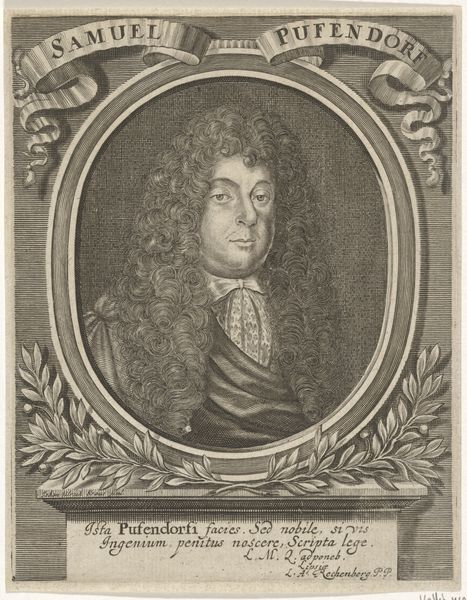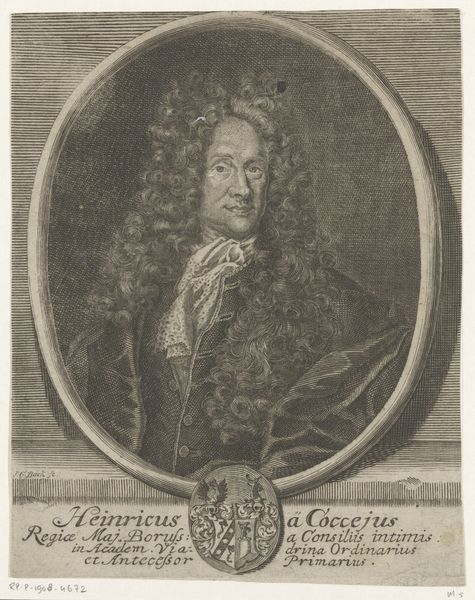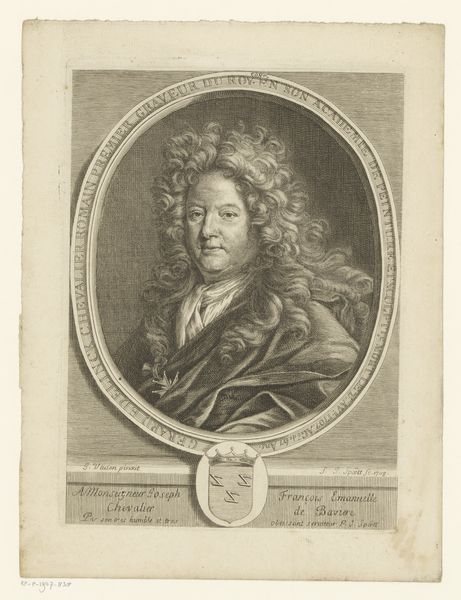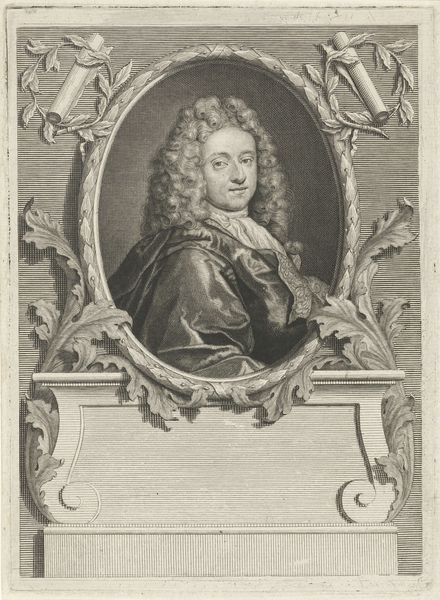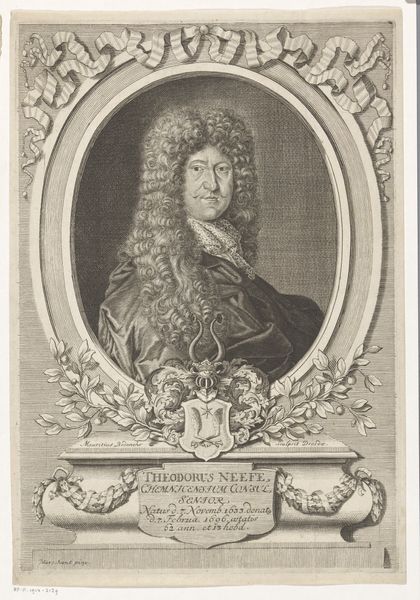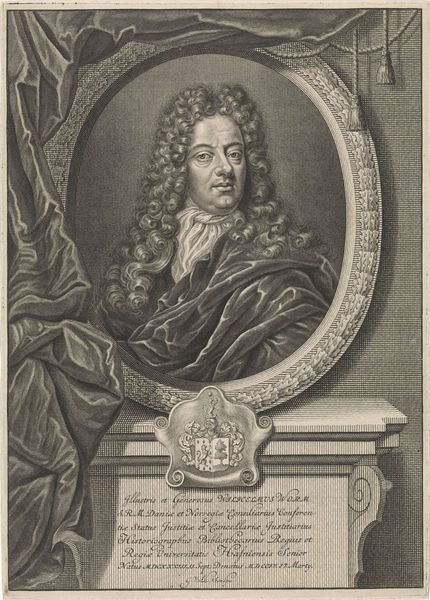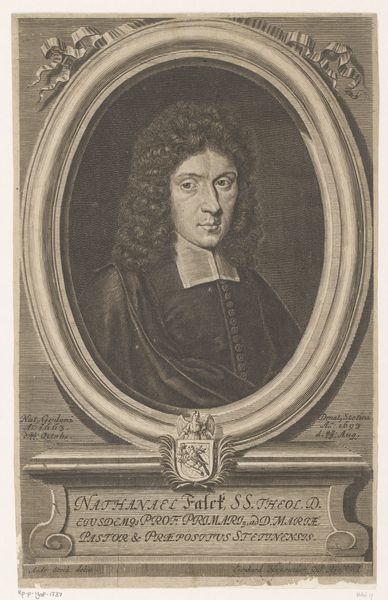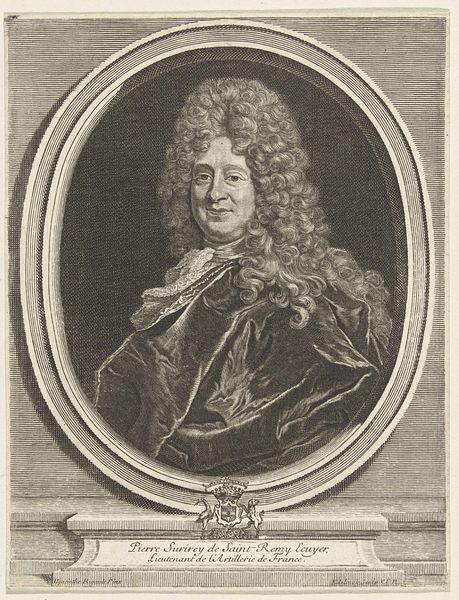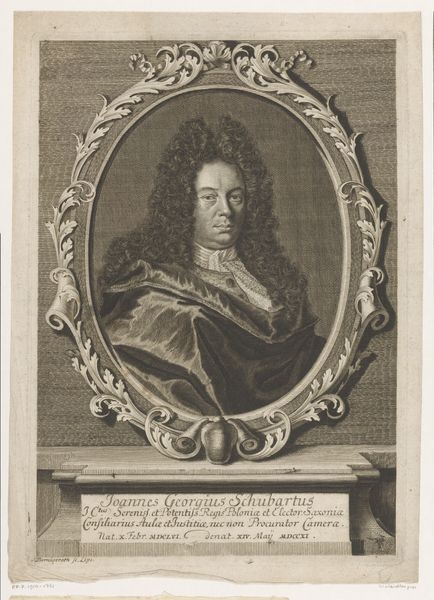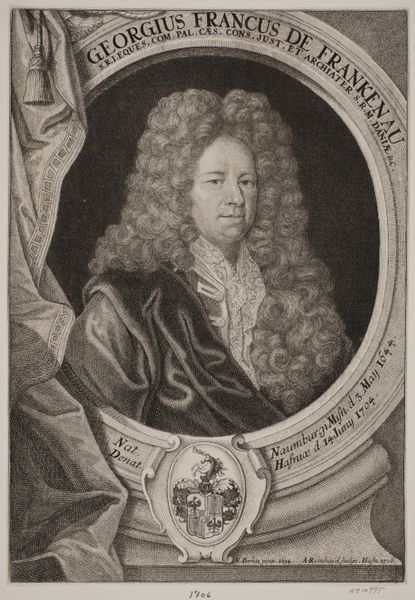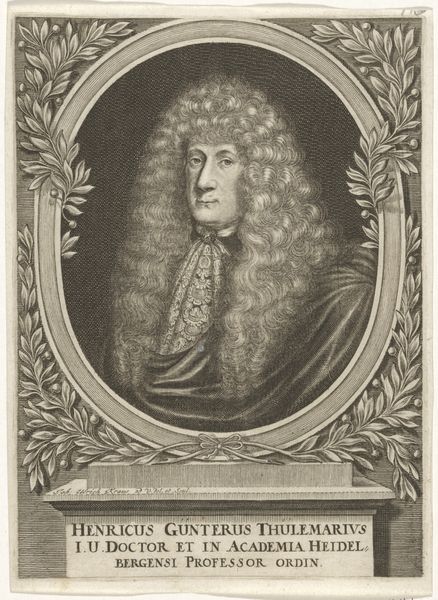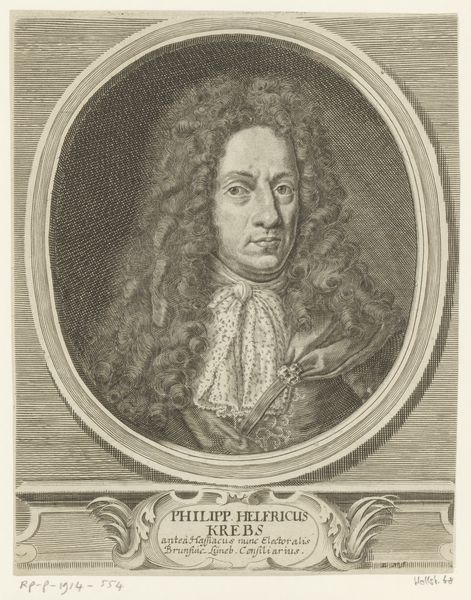
print, engraving
#
portrait
#
baroque
# print
#
old engraving style
#
19th century
#
history-painting
#
engraving
Dimensions: height 185 mm, width 155 mm
Copyright: Rijks Museum: Open Domain
Editor: This is "Portret van Friedrich Hoffmann," an engraving created sometime between 1674 and 1714 by Elias Nessenthaler. It’s interesting how the detailed engraving gives the print a sense of texture and depth. What strikes you when you look at this piece? Curator: Well, the emphasis for me always comes back to materiality and production. It's a print, yes, but how does that context shape our understanding? This wasn't just about replicating an image, it was about the wider distribution of ideas and status through accessible means. Think about who was commissioning and consuming these portraits – it points to a developing market. Editor: So, you are focusing on the socioeconomic implications, then. Do you think this portrait served a different purpose than, say, a painted portrait of the same era? Curator: Absolutely. Oil paintings were unique, bespoke objects for the elite. Prints democratized portraiture, extending influence and reinforcing social hierarchies in new ways. We should examine the labor involved: the engraver, the printer, the network of distribution. Each contributes to its meaning and value. It makes me wonder, how did the process of engraving – with its precise lines and technical demands – affect the image’s reception? Editor: That's a great point. I hadn’t thought about the act of reproduction influencing how the image was perceived. Curator: Exactly! It shifts the focus from individual genius to collaborative production and widespread dissemination. We shouldn’t separate the aesthetic experience from the social and economic contexts. Editor: That gives me a new way to think about art beyond just the image itself. Curator: Agreed! It's a reminder that art always exists within a complex network of materials, labor, and exchange.
Comments
No comments
Be the first to comment and join the conversation on the ultimate creative platform.
